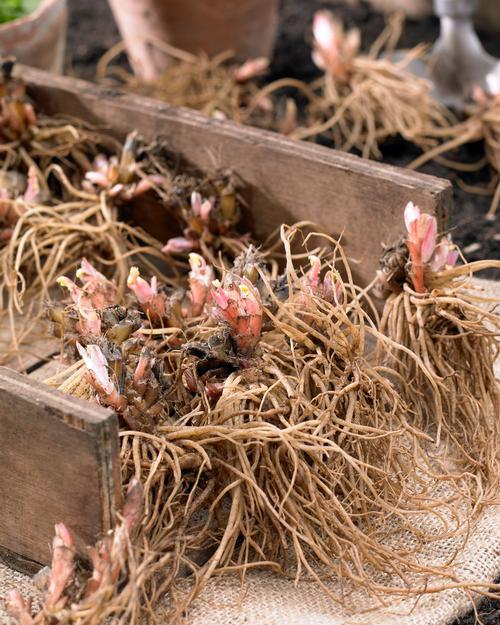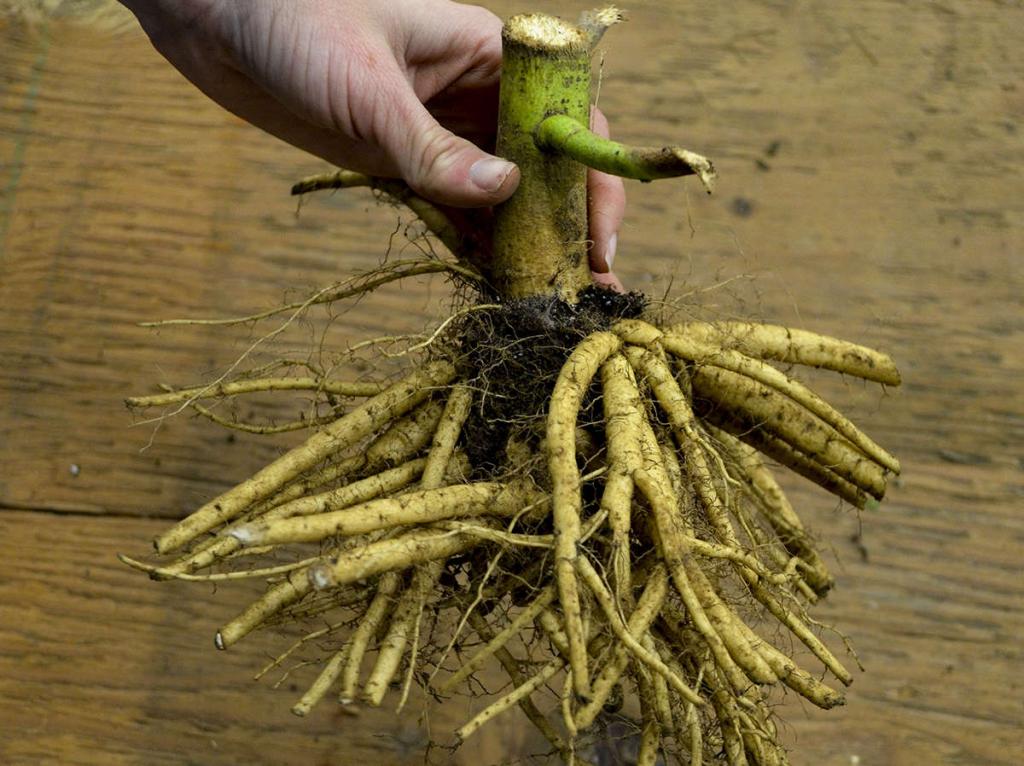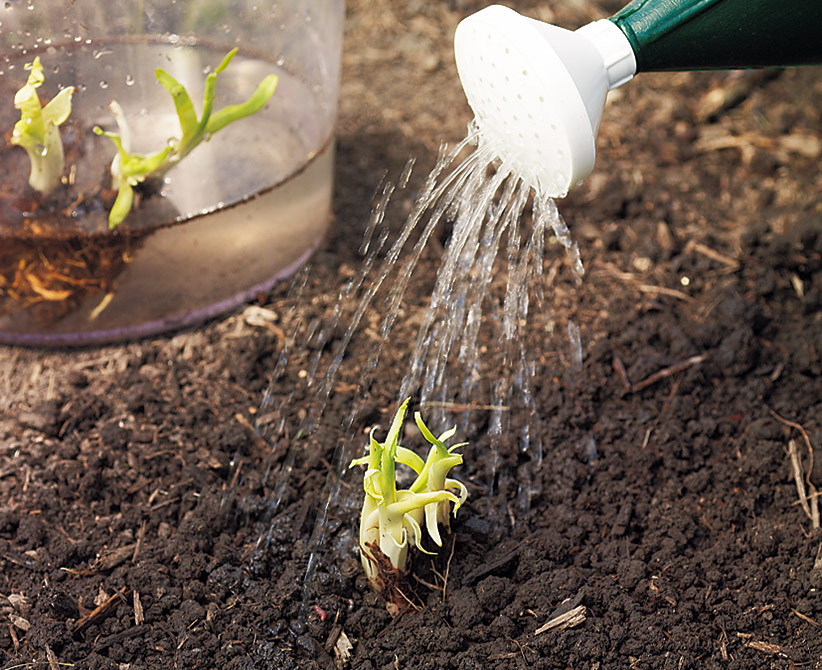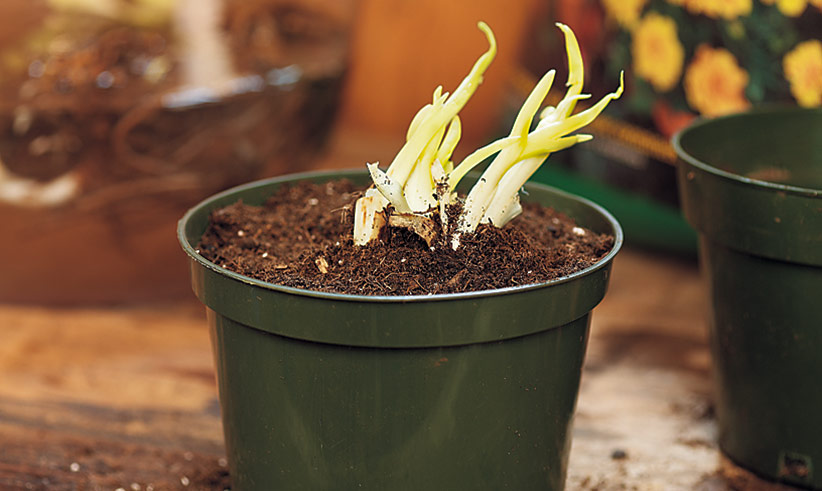Getting Started with Bare Root Perennials
Bare root perennials are a great option for gardeners looking to add some beauty and life to their outdoor spaces. These plants are sold without soil and are typically less expensive than potted perennials. However, they do require some special care when planting. In this article, we will explore the benefits of bare root perennials and provide a step-by-step guide on how to plant them successfully.
One of the main benefits of bare root perennials is their ability to establish themselves quickly in the garden. Because they are not confined to a pot, they can spread their roots out and absorb nutrients from the surrounding soil more easily. This leads to healthier and more robust plants that can thrive in a variety of conditions.
Another advantage of bare root perennials is their cost-effectiveness. Because they are sold without soil, they are often significantly cheaper than potted perennials. This makes them an excellent choice for gardeners on a budget or those looking to plant a large number of perennials.
However, bare root perennials do require some special care when planting. It’s essential to handle the roots with care, as they can be delicate and prone to damage. Planting them at the correct depth and providing adequate water and nutrients is also crucial for successful establishment.
By following the proper planting techniques and providing the right care, gardeners can enjoy the many benefits of bare root perennials. From their ability to establish themselves quickly to their cost-effectiveness, these plants are an excellent choice for anyone looking to add some beauty and life to their garden.
So, if you’re looking to learn how to plant bare root perennials, you’re in the right place. In the following sections, we will provide a step-by-step guide on how to plant these perennials successfully, including tips on how to handle the roots, plant at the correct depth, and provide adequate water and nutrients.
Preparing the Soil for Bare Root Perennials
Before planting bare root perennials, it’s essential to prepare the soil to ensure optimal growth and establishment. The soil provides the foundation for the plant’s root system, and its quality can significantly impact the plant’s overall health and performance.
To prepare the soil for bare root perennials, start by testing the pH level. Most perennials prefer a slightly acidic to neutral soil pH, ranging from 6.0 to 7.0. If the soil pH is too high or too low, it can affect the plant’s ability to absorb essential nutrients. Use a soil testing kit to determine the pH level and amend it if necessary.
In addition to pH, it’s also crucial to assess the soil’s nutrient levels. Bare root perennials require a balanced diet of nutrients to establish themselves quickly. Test the soil for nutrient deficiencies and amend it with organic matter such as compost or well-rotted manure.
The soil structure is also vital for bare root perennials. The soil should be well-draining and have a mix of sand, silt, and clay. If the soil is heavy clay or sandy, it can affect the plant’s ability to absorb water and nutrients. Add organic matter to improve the soil structure and drainage.
When preparing the soil for bare root perennials, it’s also essential to consider the specific needs of the plant. Some perennials, such as daylilies and coneflowers, prefer well-draining soil, while others, such as hostas and astilbe, prefer moist soil. Research the specific needs of the plant and amend the soil accordingly.
By preparing the soil properly, gardeners can create an optimal environment for their bare root perennials to thrive. This includes testing and amending the soil pH, nutrient levels, and structure, as well as considering the specific needs of the plant. By following these steps, gardeners can ensure their bare root perennials establish themselves quickly and grow into healthy, vibrant plants.
When learning how to plant bare root perennials, it’s essential to remember that soil preparation is a critical step in the process. By taking the time to prepare the soil properly, gardeners can set their plants up for success and enjoy a thriving and beautiful perennial garden.
Choosing the Right Location for Your Bare Root Perennials
When it comes to planting bare root perennials, choosing the right location is crucial for their success. The location can affect the plant’s ability to receive adequate sunlight, water, and nutrients, which can impact its growth and overall health.
One of the most important factors to consider when selecting a location for bare root perennials is sunlight. Most perennials require at least six hours of direct sunlight per day to thrive. However, some perennials, such as ferns and hostas, prefer partial shade. Consider the amount of sunlight your garden receives and choose a location that meets the specific needs of your plants.
Moisture is another critical factor to consider when choosing a location for bare root perennials. Some perennials, such as daylilies and coneflowers, prefer well-draining soil and can tolerate drought. Others, such as astilbe and coral bells, prefer moist soil and consistent watering. Assess your garden’s moisture levels and choose a location that meets the specific needs of your plants.
Wind protection is also essential for bare root perennials. Strong winds can damage the plants and disrupt their growth. Consider the wind patterns in your garden and choose a location that provides some protection from harsh winds.
Assessing your garden’s microclimate is also crucial when choosing a location for bare root perennials. Microclimates refer to the specific conditions within a small area of your garden, such as temperature, humidity, and sunlight. Consider the microclimate of your garden and choose a location that meets the specific needs of your plants.
When learning how to plant bare root perennials, it’s essential to remember that the location can make or break the plant’s success. By considering factors such as sunlight, moisture, wind protection, and microclimate, gardeners can choose the perfect location for their bare root perennials and set them up for success.
By choosing the right location for your bare root perennials, you can create a thriving and beautiful garden that brings joy and beauty to your outdoor space. Remember to consider the specific needs of your plants and choose a location that meets those needs.
Planting Bare Root Perennials: A Step-by-Step Guide
Planting bare root perennials can be a bit tricky, but with the right techniques, you can ensure successful establishment and a thriving garden. Here’s a step-by-step guide on how to plant bare root perennials:
Step 1: Handle the Roots with Care
Bare root perennials have delicate roots that can be easily damaged. When handling the roots, make sure to keep them moist and avoid exposing them to direct sunlight. Gently remove the plant from its packaging and inspect the roots for any damage or tangles.
Step 2: Plant at the Correct Depth
Planting bare root perennials at the correct depth is crucial for their success. The general rule of thumb is to plant the crown (where the stem meets the roots) at soil level. However, some perennials, such as daylilies and coneflowers, prefer to be planted slightly deeper. Check the specific planting instructions for your perennial variety.
Step 3: Water Properly
Watering is essential for newly planted bare root perennials. Water the plant thoroughly after planting and keep the soil consistently moist during the first growing season. Avoid overwatering, which can lead to root rot and other problems.
Step 4: Mulch and Fertilize
Mulching and fertilizing can help promote healthy growth and establishment of your bare root perennials. Apply a layer of organic mulch, such as wood chips or bark, around the plant to retain moisture and suppress weeds. Fertilize with a balanced, water-soluble fertilizer during the growing season.
By following these steps, you can ensure successful establishment of your bare root perennials and enjoy a thriving garden. Remember to also provide proper care, including watering, fertilizing, and mulching, to promote healthy growth and establishment.
When learning how to plant bare root perennials, it’s essential to remember that proper planting techniques are crucial for successful establishment. By following these steps and providing proper care, you can enjoy a beautiful and thriving garden.
Caring for Your Newly Planted Bare Root Perennials
Caring for your newly planted bare root perennials is crucial for their success. Proper care can help promote healthy growth, prevent pests and diseases, and ensure a thriving garden. Here are some tips on how to care for your newly planted bare root perennials:
Watering
Watering is essential for newly planted bare root perennials. Water the plant thoroughly after planting and keep the soil consistently moist during the first growing season. Avoid overwatering, which can lead to root rot and other problems.
Fertilizing
Fertilizing can help promote healthy growth and establishment of your bare root perennials. Use a balanced, water-soluble fertilizer during the growing season, following the manufacturer’s instructions. Avoid overfertilizing, which can damage the plant.
Mulching
Mulching can help retain moisture, suppress weeds, and regulate soil temperature. Apply a layer of organic mulch, such as wood chips or bark, around the plant. Keep the mulch layer thin, about 2-3 inches, to prevent suffocating the plant.
Monitoring for Pests and Diseases
Regularly monitor your newly planted bare root perennials for signs of pests and diseases. Check for aphids, whiteflies, and spider mites, and treat promptly if necessary. Inspect the plant for signs of disease, such as yellowing leaves or black spots, and treat with fungicides if necessary.
Common Issues and Solutions
Some common issues that may arise with newly planted bare root perennials include transplant shock, root bound, and nutrient deficiencies. Transplant shock can be minimized by watering thoroughly after planting and keeping the soil consistently moist. Root bound can be prevented by planting the perennial in a container that is at least 1-2 sizes larger than the original pot. Nutrient deficiencies can be addressed by fertilizing regularly and using a balanced fertilizer.
By following these care tips, you can help ensure the success of your newly planted bare root perennials and enjoy a thriving garden. Remember to also provide proper care, including watering, fertilizing, and mulching, to promote healthy growth and establishment.
When learning how to plant bare root perennials, it’s essential to remember that proper care is crucial for successful establishment. By following these care tips and providing proper care, you can enjoy a beautiful and thriving garden.
Common Mistakes to Avoid When Planting Bare Root Perennials
When planting bare root perennials, it’s essential to avoid common mistakes that can lead to poor establishment, reduced growth, and even plant death. Here are some common mistakes to avoid when planting bare root perennials:
Planting Too Deeply
Planting bare root perennials too deeply can cause the crown to rot, leading to poor establishment and reduced growth. Make sure to plant the perennial at the correct depth, with the crown (where the stem meets the roots) at soil level.
Not Watering Enough
Not watering enough can cause the roots to dry out, leading to poor establishment and reduced growth. Water the plant thoroughly after planting and keep the soil consistently moist during the first growing season.
Not Providing Enough Sunlight
Not providing enough sunlight can cause the plant to become leggy and weak, leading to poor establishment and reduced growth. Make sure to provide the plant with the recommended amount of sunlight for its specific variety.
Not Mulching
Not mulching can cause the soil to dry out, leading to poor establishment and reduced growth. Mulch around the plant to retain moisture, suppress weeds, and regulate soil temperature.
Troubleshooting and Correcting Mistakes
If you’ve made a mistake when planting bare root perennials, don’t worry There are steps you can take to troubleshoot and correct the issue. For example, if you’ve planted the perennial too deeply, you can gently dig it up and replant it at the correct depth. If you’ve not watered enough, you can increase the frequency of watering to ensure the soil remains consistently moist.
By avoiding common mistakes and taking steps to troubleshoot and correct issues, you can ensure the success of your bare root perennials and enjoy a thriving garden. Remember to also provide proper care, including watering, fertilizing, and mulching, to promote healthy growth and establishment.
When learning how to plant bare root perennials, it’s essential to remember that avoiding common mistakes is crucial for successful establishment. By following these tips and providing proper care, you can enjoy a beautiful and thriving garden.
Seasonal Care for Bare Root Perennials
Bare root perennials require seasonal care to ensure they thrive throughout the year. Here’s a guide on how to care for your bare root perennials during the growing season, dormant season, and periods of extreme weather:
Growing Season Care
During the growing season, bare root perennials require regular watering, fertilizing, and pruning. Water the plants deeply once or twice a week, depending on weather conditions. Fertilize with a balanced fertilizer once a month to promote healthy growth. Prune the plants regularly to maintain shape and encourage blooming.
Dormant Season Care
During the dormant season, bare root perennials require less care. Reduce watering to once a month, and avoid fertilizing. Prune the plants in late winter or early spring to prepare them for the growing season.
Extreme Weather Care
Bare root perennials can be sensitive to extreme weather conditions, such as heatwaves, droughts, and frosts. During heatwaves, provide extra watering and shade to prevent scorching. During droughts, reduce watering to once every 10-14 days. During frosts, protect the plants with a layer of mulch or bring them indoors.
Pruning, Dividing, and Propagating
Pruning, dividing, and propagating are essential techniques for maintaining the health and vigor of bare root perennials. Prune the plants regularly to maintain shape and encourage blooming. Divide the plants every 3-4 years to prevent overcrowding and promote healthy growth. Propagate the plants through division, cuttings, or seed to create new plants.
By following these seasonal care tips, you can ensure your bare root perennials thrive throughout the year. Remember to also provide proper care, including watering, fertilizing, and mulching, to promote healthy growth and establishment.
When learning how to plant bare root perennials, it’s essential to remember that seasonal care is crucial for successful establishment. By following these tips and providing proper care, you can enjoy a beautiful and thriving garden.
Enjoying the Fruits of Your Labor: Tips for a Thriving Bare Root Perennial Garden
After learning how to plant bare root perennials and providing proper care, it’s time to enjoy the benefits of a thriving garden. Here are some tips on how to attract pollinators, create a low-maintenance garden, and enjoy the beauty and fragrance of your plants:
Attracting Pollinators
Bare root perennials are a great way to attract pollinators, such as bees and butterflies, to your garden. Plant a variety of perennials that bloom at different times to provide a constant source of nectar and pollen. Consider adding a few native plants to your garden, as they are more likely to attract local pollinators.
Creating a Low-Maintenance Garden
Bare root perennials are a great option for gardeners who want a low-maintenance garden. They require less care than annuals and can thrive in a variety of conditions. Consider adding a layer of mulch to your garden to retain moisture and suppress weeds.
Enjoying the Beauty and Fragrance of Your Plants
Bare root perennials offer a wide range of beautiful and fragrant flowers, foliage, and stems. Consider adding a few fragrant perennials, such as lavender or roses, to your garden to enjoy their scent. Take time to appreciate the beauty of your plants and enjoy the fruits of your labor.
By following these tips, you can enjoy the benefits of a thriving bare root perennial garden. Remember to also provide proper care, including watering, fertilizing, and mulching, to promote healthy growth and establishment.
When learning how to plant bare root perennials, it’s essential to remember that enjoying the benefits of a thriving garden is the ultimate goal. By following these tips and providing proper care, you can enjoy a beautiful and thriving garden for years to come.






